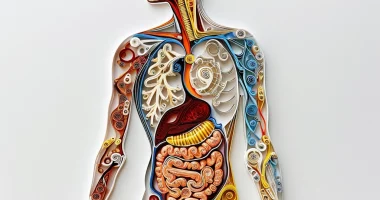Gallbladder cancer
What’s that?
Gallbladder cancer is a malignant neoplasm of this organ, represented mainly by adenocarcinoma or squamous cell cancer. It develops, as a rule, in long-term untreated chronic cholecystitis. For a long time, it can be asymptomatic and manifests itself only when the progression of pathology cannot be stopped. Attentive attitude to your health – quality monitoring and treatment of chronic diseases of the hepatobiliary system, referral to a doctor when any new signs of pathology appear – will help to reduce the risk of gallbladder cancer or diagnose it at the initial stage, which will allow to start effective treatment and improve the prognosis.
About the disease
Cancer ranks 5th among all cancerous diseases of the gallbladder. It mainly affects the elderly women. Four out of five cases of this pathology are adenocarcinoma, and only one patient out of five is verified as squamous cell cancer, in isolated cases – small cell cancer.
The mucous membrane cells of the gallbladder fundus or neck undergo primary malignant transformation. Progressing, the pathological process spreads to the bile ducts, liver, and internal organs located in close proximity – stomach, duodenum, or colon. Cancer is prone to metastasis – other tumors are often found in the liver, lymph nodes, peritoneum, pleura, and ovaries.
Types
Histologically, two common types of gallbladder cancer are distinguished: adenocarcinoma and squamous cell carcinoma.
The modern clinical classification, according to the TNM system, suggests assessing the size of the tumor, the degree of lymph node involvement, and the presence of metastases. Based on these data, there are five stages of gallbladder cancer:
- 0, or initial stage – “cancer in situ”; it is asymptomatic, localized exclusively in the mucosa of the organ, diagnosed incidentally during examination in connection with other pathology;
- I – the tumor is located in the mucosa, prone to growth;
- II – malignant cells spread into the muscular layer of the wall within the affected organ;
- III – the tumor is detected in regional lymph nodes or other organs and tissues outside the bladder;
- IV – foci of neoplasm are determined in remotely located tissues and organs.
Symptoms
At first, gallbladder cancer in women or men does not show any symptoms – the patient does not even suspect that he or she has such a severe pathology. The early stage of the tumor can be detected accidentally – during histological examination of the tissue of the organ removed in connection with gallstone disease.
As the malignant process progresses, the tumor grows and spreads; the patient experiences the first, but not specific, symptoms and signs of gallbladder cancer:
- general weakness, malaise, rapid fatigue;
- decreased appetite;
- dull, aching pain in the right subcostal region and upper central abdomen;
- unexplained weight loss;
- prolonged, unrelated to infection or other causes, subfebrile fever
Sometimes the tumor reaches such a size that it blocks the lumen of the biliary tract. In that case, the patient develops mechanical jaundice – the skin and mucous membranes acquire a yellow tint, skin itching, urine becomes dark, and feces – are white or colorless.
Sometimes, the malignant process occurs and grows lightning fast – the patient is determined by pronounced general intoxication, and sepsis develops.
Reasons
The leading cause of gallbladder cancer is a long-existing chronic inflammatory process in this organ, stone-free or accompanied by concrement formation. At the same time the leading moment in the mechanism of malignization of previously unchanged cells is recognized as constant traumatization of the mucous membrane of the bladder by stones moving in its cavity.
The following factors increase the risk of cancer pathology:
- biliary cysts and polyps;
- salmonellosis;
- Helicobacter pylori;
- abuse of fried, fatty, spicy, spicy food;
- smoking, alcohol abuse;
- overweight;
- exposure to carcinogenic chemicals.
Diagnosis
The initial stage of the diagnostic process includes:
- patient’s complaints and medical history;
- objective examination (the doctor can detect emaciation of the patient, enlargement of the liver, gallbladder, spleen, lymph nodes, and thickening in the abdominal cavity).
This data will allow the specialist to suspect a cancerous disease of the organs of the hepatobiliary system. To clarify the diagnosis, the patient will be prescribed additional examination, in particular:
- clinical blood test;
- biochemical blood test (level of liver enzymes, bilirubin);
- determination of the gallbladder cancer marker CA 19-9 in the blood;
- ultrasound of the abdominal cavity (will detect the tumor, its localization, and spread to other tissues and organs);
- percutaneous transhepatic cholangiography;
- cholecystography;
- retrograde cholangiopancreatography;
- cholescintigraphy;
- computed or magnetic resonance imaging;
- targeted percutaneous biopsy of the neoplasm with further examination of the cellular composition of the material under study.
Treatment
The tactics of gallbladder cancer treatment are determined by an oncologist individually for each patient, depending on the stage and peculiarities of his clinical situation. The patient may be recommended to:
- radical surgical treatment (removal of the affected organ, possibly with bile ducts, resection of the right lobe of the liver, and in severe cases – removal of the pancreas and duodenum);
- radiation therapy;
- chemotherapy.
Treatment is predominantly complex – it includes not one but a combination of the above methods (e.g., radiation therapy after resection of the gallbladder).
All these treatment options are available in more than 850 hospitals worldwide (https://doctor.global/results/diseases/gallbladder-cancer). For example, extended cholecystectomy can be done in 23 clinics across Turkey for an approximate price of $12.0 K (https://doctor.global/results/asia/turkey/all-cities/all-specializations/procedures/extended-cholecystectomy).
Prevention
It consists of minimizing the body’s exposure to factors that contribute to the development of gallbladder cancer. These are:
- quitting smoking and alcohol use;
- timely treatment of chronic cholecystitis;
- adherence to the principles of healthy eating;
- in case of excess body weight – weight loss;
- sufficient physical activity.
Rehabilitation
Surgery for cancer is always tricky, and the disease itself significantly weakens the patient. Therefore, after surgical intervention, the patient stays in the hospital for a long time, is regularly examined by a doctor for the development of complications, monitors tissue healing processes, and adjusts the prescribed drug treatment depending on the symptoms of the process. After discharge from the department, the patient is usually prescribed radiation or chemotherapy. He must eat a complete diet and consume sufficient protein, vitamins, trace elements, and rest, excluding overwork.



